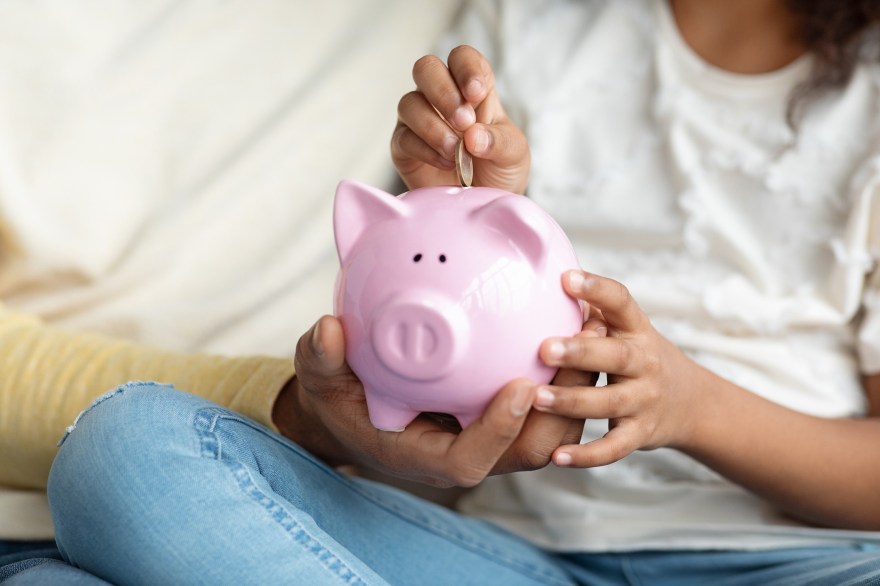
Are you tired of feeling lost when it comes to managing your money? You’re not alone. A new study found that only 57% of US adults are financially literate. But no matter how old you are, it’s never too late to build your money management skills.

Get the cash you need with a low-interest personal loan today
In This Article
What is financial literacy?
Financial literacy involves understanding basic financial skills and the ability to use these skills to manage money effectively.
It encompasses skills like budgeting, saving, spending, investing, and debt and credit management. Financial literacy allows you to build healthy money habits that can help you make progress toward bigger financial goals—like buying a house, retiring comfortably, or starting a business.
Being financially literate doesn’t necessarily mean you have an abundance of cash. Still, it means you have the knowledge and confidence to use the money you do have to make financial progress.
Why is financial literacy important?
Financial literacy is important because it helps you prepare for emergencies, set yourself up for retirement, and reach your money goals.
Having knowledge about finance can help you avoid risky financial situations such as:
- Acquiring more and more debt with no plan to pay it off
- Falling victim to fraud
- Approaching retirement without adequate savings
These situations are all too common. On average, U.S. adults lost $1,506 to personal financial mishaps in 2023, according to the latest National Financial Educators Council (NFEC) report. Just like financial literacy can pave the way for reaching your goals, financial illiteracy can set you back in several ways.
Being financially literate and having the confidence to make good financial decisions sets you up for success in life. And understanding how to use financial products and services—like bank accounts, credit cards, loans, and retirement accounts—can make everything easier.
6 ways to improve your financial literacy
Even though financial literacy encompasses a lot, there are simple steps you can take to learn the foundations and gain practical financial skills. Here are six ways you can start today:
1. Learn how to budget
Learning how to budget is foundational to financial literacy. Budgeting allows you to understand and plan your cash flow while prioritizing your financial goals. When you use a budget effectively, it’s easier to stay out of debt and reach important savings goals.
For simplicity’s sake, you can use a budgeting app like You Need a Budget or Tiller. A tool that links with your bank accounts makes it easier to keep things up-to-date and organized.
2. Create a debt management plan
Facing your debt and developing a plan to manage it is a major part of financial literacy. While it can be intimidating, working toward paying off your debt can turn your entire financial situation around.
Financial literacy involves learning about your options—whether that’s debt consolidation, debt settlement, or slowly paying off each debt one at a time.
If you need support when it comes to facing your debt, a non-profit credit counseling organization can help.
3. Build an emergency fund
Being financially literate means preparing for the unexpected. That’s why building an emergency fund is crucial. Rather than using credit when your car needs an emergency repair, you can fall back on your emergency fund to cover the cost.
Ideally, you should save three to six months’ worth of living expenses for emergencies. If saving that much money feels impossible, you could set up an automatic transfer of a few dollars a week from your checking to your savings. When you can afford to save more, bump up the amount.
4. Review your credit report and keep tabs on your credit score
Good credit opens many doors when it comes to qualifying for credit products, so it’s important to track it. For example, you can get loans with favorable rates, reward credit cards, or lower insurance costs.
Check your credit score regularly to see where your credit stands. Review your credit report once a year to ensure there are no mistakes or fraudulent activity.
If your credit is in poor shape, there are steps you can take to improve it. But if you’re having trouble turning it around, you can consult a credit counselor for support.
5. Start planning for retirement
No matter your age, it’s never too early (or too late) to start saving for retirement. Talk to your employer about any workplace retirement benefits you have access to. If they offer a retirement plan, consult with HR to set up an account and automate contributions.
If your workplace doesn’t offer a retirement plan, you can open an individual retirement account (IRA) online.
Consult a professional, such as a financial advisor, if you have questions or concerns about retirement savings.
6. Continue educating yourself
Financial literacy is a lifelong journey. With each new phase of life, you’ll have new financial situations to navigate. That’s why continuing to educate yourself is an important part of financial success.
The good news is financial education is more accessible than ever. Find podcasts, books, videos, and blogs that cover topics you want to learn about. If you need more guidance, there are professionals—like accountants, credit counselors, and advisors—who are happy to help.
The benefits of becoming financially literate
The benefits of becoming financially literate don’t just appear on your bank statements. It helps you feel confident when making financial decisions, which has a ripple effect on your entire life.
Here are two more benefits of becoming financially literate:
Financial literacy helps you prepare for emergencies
A big tenet of financial literacy is knowing how to prepare for emergencies. Most emergencies have a financial implication, whether that’s a surprise home repair, an unexpected medical bill, or a last-minute plane ticket to be with a loved one.
Getting your budget to a place where you can prioritize savings is a huge financial milestone. When you can weather these emergencies without getting into debt, they become minor inconveniences instead of major setbacks.
Financial literacy helps you reach your goals
Financial literacy gives you the awareness and tools you need to meet your goals. For example, if you know you want to pay for a wedding next year, buy a house in five years, and retire in 35 years, you can use your financial knowledge to implement strategies to work toward each of these goals.
Whether you want to buy a new car, refinance your house, or simply build wealth, being financially literate puts your goals within reach.
Start building financial literacy today
By building your financial literacy, you empower yourself to make confident, well-informed decisions that will benefit you for years to come. It doesn’t matter where you’re starting from.

Get the cash you need with a low-interest personal loan today
Every step you take towards improving your financial literacy is a step closer to achieving your financial goals.
Written by Cassidy Horton
Cassidy Horton is a finance writer who’s passionate about helping people find financial freedom. With an MBA and a bachelor’s in public relations, her work has been published over a thousand times online by finance brands like Forbes Advisor, The Balance, PayPal, and more. Cassidy is also the founder of Money Hungry Freelancers, a platform that helps freelancers ditch their financial stress.
Read more:
- 6 Lessons for Teaching Financial Literacy to Your Child
- 13 Ways to Save Money on a Tight Budget
- How to Make a Financial Plan
- Do Millennials Have the Best Personal Finance Habits?
- Women and Money: 10 Tips for Building Financial Independence
All personal loans made by WebBank.